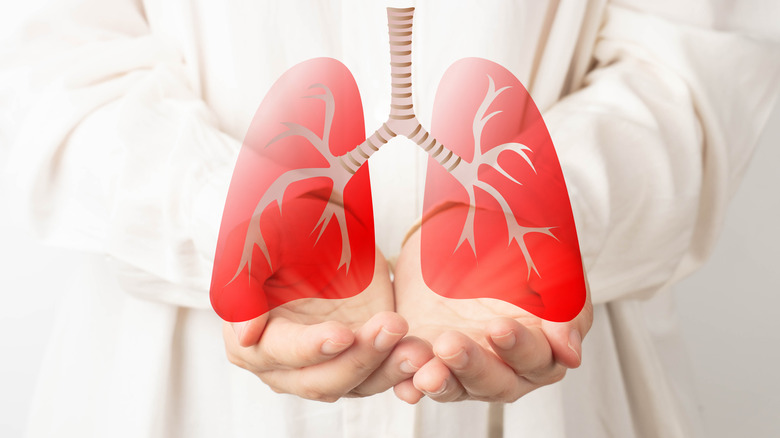How Are Blood Clots In The Lung Treated?
When you have a blood clot in your lungs, it is called a pulmonary embolism, per Johns Hopkins Medicine. Most of the time, the blood clot in your lungs is a piece of another blood clot that formed somewhere else in the body, such as the leg, and traveled to the lungs via the bloodstream, according to Mayo Clinic. Pulmonary embolisms are dangerous because they can potentially block blood flow to the lungs.
Certain conditions may raise your risk of developing a blood clot in your lungs. If you have developed other blood clots, had cancer, or are undergoing cancer treatment, your risk may increase. Johns Hopkins Medicine also states that the elderly or those with a family history of the condition may also have an increased chance of experiencing the condition. In addition, the odds of developing a blood clot in your lungs go up if you have limited mobility or have certain health conditions, such as chronic obstructive pulmonary disease (COPD), high blood pressure, or inflammatory bowel disease (IBD).
Treatments work to manage the size of the clot
Blood thinners are generally prescribed to treat pulmonary embolisms. According to the American Lung Association, these medications won't dissolve the clot, but they can keep it from growing as well as keep new clots from forming. The expectation is that the body will dissolve the blood clot on its own. If the clot does not dissolve after a few months of taking blood thinners, then a clot dissolver might be prescribed in life-threatening cases. In some situations, the clot is removed via a catheter. Some large clots may also be removed through surgery, but this is rare, per Johns Hopkins Medicine.
Prevention of blood clots is important to lower the risk of developing pulmonary embolisms. Keeping physically active on a regular basis is important, as is eating a healthy, balanced diet. Johns Hopkins Medicine also suggests staying at a healthy weight, not smoking, and wearing compression stockings or sleeves to lower the chances of developing blood clots.


